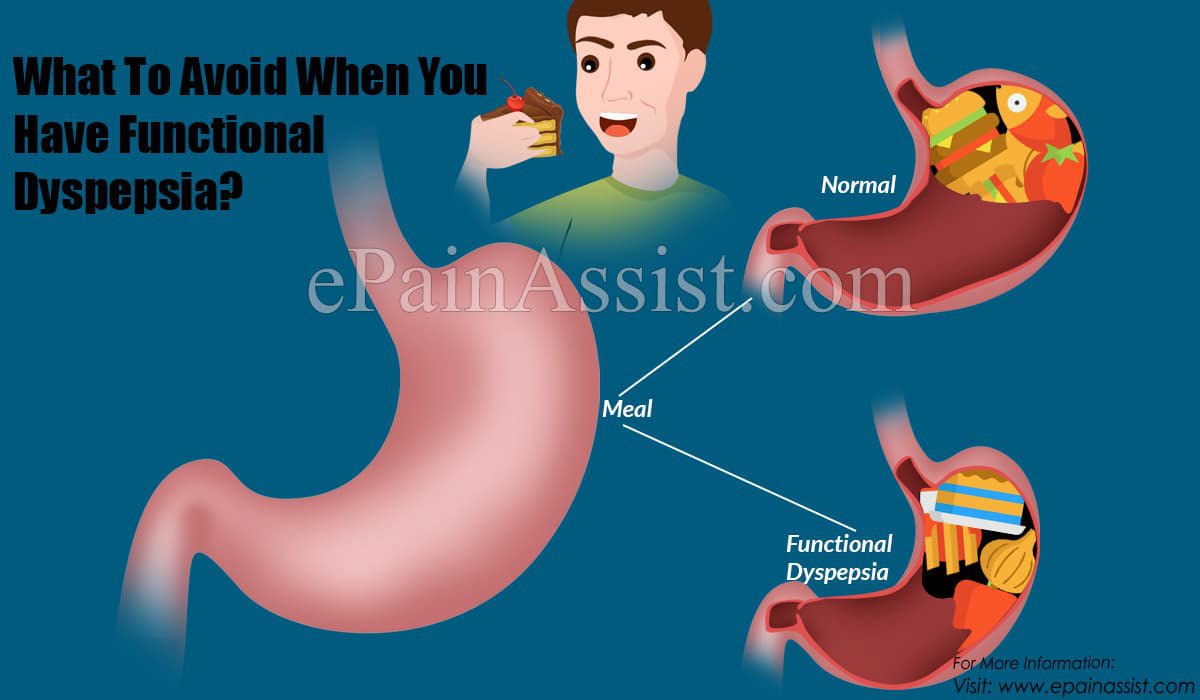Functional dyspepsia is a chronic condition of the upper part of the digestive tract, which impacts the sensation and movement of the upper part of the digestive tract. This movement is known as peristalsis and in normal circumstances, is a downward movement involving the pumping and squeezing of the esophagus, stomach, and small intestine. This movement begins after swallowing. It is a functional disorder because there is no detectable or obvious cause of this condition, but the symptoms still exist and persist. This is a very commonly found condition. (1)

What To Eat When You Have Functional Dyspepsia?
Certain dietary changes can help in reducing and managing the symptoms of this condition. What to eat when you have dyspepsia-
- Eating a balanced and nutritious diet can generally help in improving your overall health. It can also help in treating or managing certain disorders, including functional dyspepsia.
- It is advisable to eat fresh fruits and vegetables. However, fruits that contain high amounts of acids, like oranges and other citrus fruits, tomatoes, etc. may aggravate this condition and are best consumed with one’s own discretion. Watermelon is also known to aggravate dyspepsia.
- Foods like rice, apples, bread, honey, yogurt, dates, walnuts, etc. alleviate dyspepsia.
- Eating smaller and frequent meals in place of a large and full meal is advisable to avoid symptoms of dyspepsia
- Drink a good amount of water throughout the day. Water when had in adequate quantity, can help in keeping your gut healthy and properly functioning (2) (4)
What To Avoid When You Have Functional Dyspepsia?
- Avoid foods that have a high acidic content, like oranges, tomatoes, and many other citrus foods.
- Avoid foods that are high in fat, as it may slow down the evacuating of your stomach
- Avoid foods that are too hot and spicy as it may irritate your digestive tract and further aggravate functional dyspepsia symptoms
- Avoid carbonated or aerated drinks and beverages.
- Also, avoid foods containing caffeine. This is particularly helpful if followed post-noon
- Studies also show that foods like pickles, vinegar, tea, pasta, pizza, salty foods, packaged and processed foods, etc. aggravate dyspepsia. Try to avoid or limit the intake of these foods
- Avoid smoking, tobacco chewing, and alcohol consumption. If unavoidable, try to reduce or limit the intake of alcohol, but smoking and tobacco chewing must be restricted at all costs
- Identify if dairy triggers your symptoms. If so, avoid all dairy products and if possible, switch to non- dairy alternatives like plant-based milk and yogurt, etc.
- Avoid eating too fast or quickly. Chewing slowly and completely is much more helpful to people with dyspepsia.
- Avoid skipping meals or overeating
- Avoid large or full meals and eat smaller, frequent meals
Some of the over-the-counter pain medications like aspirin and ibuprofen may cause dyspepsia or stomach problems. So, before popping a painkiller just like that, it is strongly advisable to consult your doctor (2, 4)
There are certain factors that may increase the risk of getting functional dyspepsia. While it is not possible to avoid all of them, some of them can surely be avoided. These may include –
- Being a female
- Being older in age
- Smoking
- Anxiety, depression or stress
- History of being physically or sexually abused during childhood
- Random use of over- the- counter painkillers like aspirin and ibuprofen (3)
Conclusion
Functional dyspepsia is the commonest type of dyspepsia seen in people all over the world. While it is not possible to cure or reverse it completely, it can certainly be managed well with the help of certain lifestyle changes, dietary modifications, alternative and natural treatment methods and medications as and when recommended by your doctor. Though functional dyspepsia cannot be cured, it is not known to produce any serious medical complications or consequences. Eating and avoiding certain foods can help in treating and managing the symptoms produced by functional dyspepsia.
- https://badgut.org/information-centre/a-z-digestive-topics/functional-dyspepsia/
- https://www.news-medical.net/health/Lifestyle-Changes-for-Indigestion-(Dyspepsia).aspx
- https://www.mayoclinic.org/diseases-conditions/nonulcer-stomach-pain/symptoms-causes/syc-20375709
- https://www.healthline.com/health/functional-dyspepsia
Also Read:
